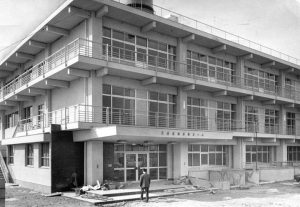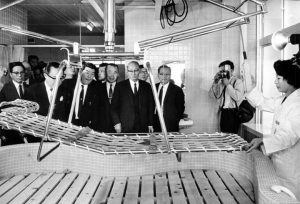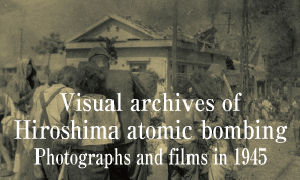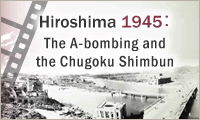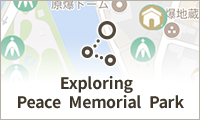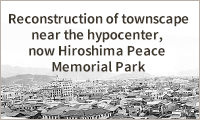Documenting Hiroshima 80 years after the A-bombing: April 21, 1970, kinless old A-bomb survivors begin to move into nursing home
Apr. 17, 2025
Kinless old A-bomb survivors were provided with physical and mental care
by Michio Shimotaka, Staff Writer
On April 21, 1970, a nursing home for atomic bomb survivors opened in Funairi Saiwai-cho (now part of Hiroshima’s Naka Ward), and A-bomb survivors began to move into it. That day, nine people arrived from the Hiroshima Atomic Bomb Survivors Hospital (now located in Naka Ward). All of them were kinless old A-bomb survivors, aged between 63 and 86. An article in the Chugoku Shimbun published on April 22 reported new residents interacted warmly, expressing sentiments such as “Let’s live happily” and “I’ve finally settled down.”
The nursing home was a three-story ferroconcrete building with a single basement floor constructed jointly by the Hiroshima prefectural and municipal governments under the Atomic Bomb Medical Relief Law, enforced in 1968. It featured 24 private rooms and had capacity for 100 residents needing regular nursing care and 50 residents requiring specialized and high-level nursing care. According to the Chugoku Shimbun, the nursing home included a dining hall, rehabilitation room, and bathroom equipped with a mechanical system that allowed bedridden residents to bathe without needing to move.
There were various events, such as volunteer-provided haircuts and regular visits from the local women’s association, which featured folk songs or dancing. In 1971, a sunroom was built on the roof with donations from the public, and became a recreation space where residents listened to records and shared their haiku.
Nursing home residents lost something to live for
On the other hand, a group of Tadakazu Aisaka, 94, a resident of Nishi Ward and former head of the municipal Funairi A-bomb survivor health center (which was reorganized into the Municipal Funairi Hospital in November 1971), presented findings on the situation of residents who spent more than a year there after the facility opened. He shared this information at a symposium held by the post-atomic bomb disability research group. He noticed a high incidence of anemia, cerebral arteriosclerosis, and nephrosclerosis among the residents and pointed out the importance of medical management. He also reported that 16 out of 179 residents had passed away.
Requests from local governments and A-bomb survivors led to the creation of the nursing home. At the time, there was a growing public concern about the hardships faced by kinless old A-bomb survivors. In 1972, the municipal government conducted the first fact-finding survey, and 3,394 people answered it. In terms of health conditions, 55.3 percent reported “poor health,” “having a disease,” or “being bedridden.” Residents with a monthly income below 20,000 yen made up 63.6 percent. Meanwhile, 64.9 percent said they had nothing to live for.
In a discussion meeting featured in the 1980 publication “Genbaku Koro” (“Kinless Old A-bomb Survivors”), which compiled the voices of nursing home residents by journalists and caseworkers, a resident’s sentiment was expressed: “I just saw my family being burned to death in front of me and could do nothing to save them. For more than 30 years since the end of the war, I have lived not so much with self-reproach for surviving, but with a deep sense of human helplessness.”
Reflecting on the time, Mr. Aisaka also said A-bomb survivors faced problems that could be described as social disease, including isolation due to prejudice against them. He said, “There was an aspect of the nursing home where A-bomb survivors in a similar situation talked to each other, which gave them peace of mind. Considering the nature of the damage caused by the A-bombing, including their anxiety about the effects of radiation, I always felt creating more such spaces was essential.”
There were 465 people on the waiting list
There was no end to elderly A-bomb survivors hoping to move into the nursing home. According to the report by the prefectural government, two years after the home opened, the number of people on the waiting list had soared to 465, more than three times its capacity.
In 1973, the prefectural and municipal governments expanded the facility, increasing its capacity to 250 residents. In 1982, they named the home Funairi Mutsumien and established a new home, Kandayama Yasuragi-en, in Higashi Ward. In 1992, Kurakake Nozomi-en opened in Asakita Ward with the support of various individuals, including the singer Kotaro Yamamoto. In 2007, Yano Orizuru-en was privately established and began operating in Aki Ward.
(Originally published on April 17, 2025)

